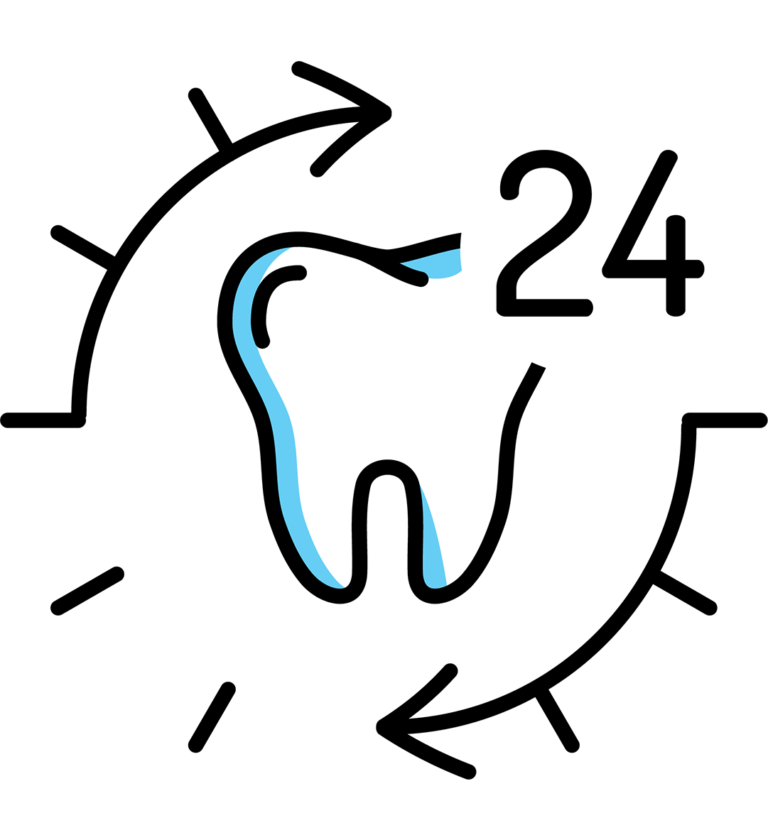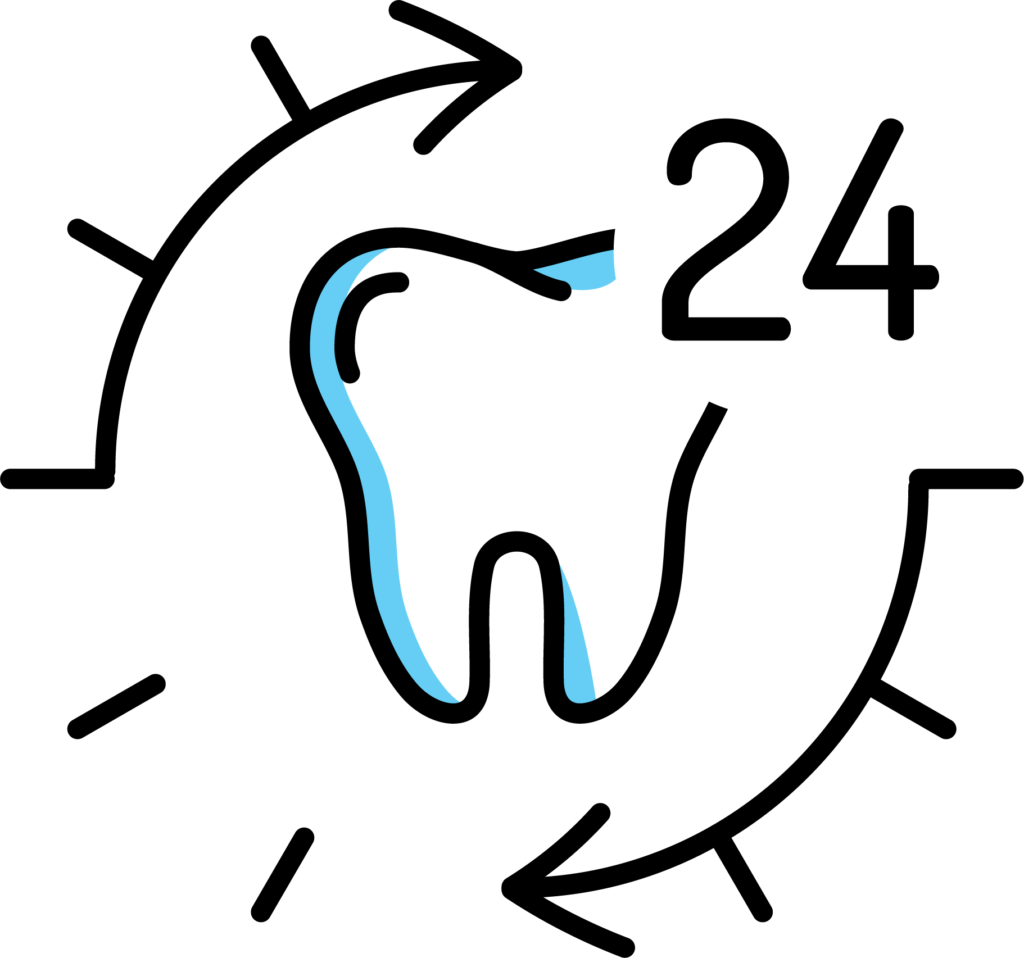Between the ages of 5 and 9 are among the most important years in establishing the permanent health of your child’s teeth, including cavity prevention and protection of dental trauma due to injury. Dental decay is the most common chronic disease in young people between ages of 5 and 17, according to the Center for Disease Control and Prevention (CDC).
Children should receive a comprehensive evaluation for orthodontic development around the age of seven. Furthermore, the American Association of Orthodontists has recommended that the proper age for a child’s first visit to the orthodontist is no later than seven years of age.
Here at MPD, we introduce your children to the world of dentistry with a friendly, patient and comfortable approach. We understand that every child has unique needs and our treatment recommendations are customized for the child, their age, dental needs, and parental preferences alike. As your child grow into their pre-school and elementary school years, our team at Middletown Pediatric Dental is here to help consult, treat and protect your child’s growing smiles.

Routine Care
Checking, Prevention and Early Intervention
Bringing your child to the dentist early and regularly will foster proper oral care routine that can last a lifetime. Routine checkups every six months help prevent cavities and tooth decay, which can lead to pain, trouble concentrating and other medical issues. Children with healthy teeth are able to chew food easily, learn to speak clearly, and smile with confidence.
During routine appointments, our dentists will make sure that your child’s teeth and gums are healthy. If any treatment is necessary, you can be rest assured that we will take a conservative approach and recommend options for your child similar to what we would do for our own.
What to expect:
Your child will be given a thorough dental examination in one of our treatment chairs. Your child can relax and watch a movie of their choice during their dental cleaning, which also includes a thorough flossing and application of a fluoride varnish to help maintain strong and healthy teeth and gums. Parents will receive important information pertaining to nutrition and the prevention of childhood dental caries (tooth decay and/or cavities).
Last but not least, here at Middletown Pediatric Dental, we aim to make your child’s appointments both fun and informative!

Preventive Care Treatment
Protect and Shield
The American Academy of Pediatric Dentistry (AAPD) recommends sealants as an effective method for cavity prevention. This preventive measure is a coating that our dentists will apply onto your child’s teeth to provide a long-lasting extra protection from decay. Dental sealant treatments are simple*, painless and non-invasive and create a barrier into the tiny grooves where cavity-causing bacteria live. Toothbrush bristles are too large to reach into the grooves, making sealant application one of the most important preventive treatments available.
Children are prone to cavities due to sugar consumption and improper brushing techniques and dental sealants add an extra layer of protection to keep your children’s teeth healthy. In addition, sealants are one of the most cost-effective means of preventing cavities – they cost less than half of what one filling costs!
*Note to parents: Sealants are simple procedures and takes about 10-15 minutes in which your child can eat before and after.
Strengthen Tooth Enamel
Flouride is a naturally occurring mineral that has the unique ability to strengthen tooth enamel, prevent cavities and even reverse decay at its earliest stages. Our dentists can apply a safe and protective fluoride varnish to your young children’s teeth.
Better Safe than Sorry
The American Dental Association (ADA) estimates that young athletes without mouth guards are 60 times more likely to suffer dental injury and trauma than those who do. Mouth guards are sometimes required in school-based sports such as football, ice hockey, lacrosse and hockey. The ADA recommends the use of mouth guards in other sports and activities. Besides protection from dental related trauma and injuries, recent studies suggest that mouth guards can help prevent concussions and neck injuries.
Pediatric dentists estimate that over 25% of dental injuries occur while playing sports, with the majority of those involving the top front teeth.
Custom mouth guards are tailor made to your child’s teeth, making them more comfortable and are constructed of higher quality given that the tighter fit will provide the coverage and protection your child needs

Restorative Care Treatment
If cavities and toothaches are disturbing your child, our team at Middletown Pediatric Dental is here to help and consult. We offer a range of treatment options to remove the decay, treat and protect your child’s smile.
Early Intervention
Unfortunately cavities are a common problem and at least 20% of children aged 5 to 11 years have at least one untreated cavity. Here at Middletown Pediatric Dental, our dentists will remove the decay, clean the affected area, and use a composite filling to protect the tooth’s structure and restore its form and function. It is a painless procedure and the filling materials that we use here are high quality, BPA-free, non-toxic and safe.
Intervention and Restoration
Unfortunately, there are times when a cavity gets so big it spreads into the nerve of the tooth or eats away at a lot of the tooth. In these circumstances, we need to provide a strong long-lasting solution. A pediatric crown is a restoration that covers or “caps” a tooth, restoring it to normal size and shape while strengthening and protecting it from further cracking, decay, or breakage. Tooth crowns are necessary when a tooth is broken down to the point where a filling won’t be effective, or following a pediatric root canal, wherein part of the baby tooth’s nerve has been removed due to the extent of the cavity. These are simple, routine procedures, done in a single quick visit!
Pediatric crowns can vary from stainless steel to zirconia. The crown will eventually fall off with the baby tooth when it is time to exfoliate. We offer both stainless steel and white tooth-colored crowns at Middletown Pediatric Dental. Stainless steel crowns are slightly more conservative, and rarely experience problems. However, the biggest drawback of stainless steel crowns is their metallic color. They are ideal for a child’s rear teeth that are not visible, but if a crown is necessary for a tooth that will show, they can be done in white per the parent’s preference. White crowns are made of zirconia and are close in color to the natural teeth, so they are far more cosmetically pleasing. They tend to hold up very well, however are not quite as resilient as stainless steel crowns, and may fracture, dislodge, or discolor with time, and ultimately require replacement.
Non-invasive alternative
Approved by the FDA, this revolutionary modality stops the decay process and kills the “sugar bug” germs. SDF is a clear antimicrobial liquid applied using a tiny brush over the course of one to two visits. It is applied to the area of decay, arresting the cavity and strengthening the tooth in a fast, painless and non-invasive manner. One thing some view as a downside is the color change. The SDF stains the decay a black color. This can always be replaced with a white, aesthetic colored filling in the future.
SDF offers an alternative path for young, fearful, or pre-cooperative children for whom treatment is not possible, often preventing the need for sedation, local anesthesia, fillings, and crowns. There are also applications for adolescents and adults in select situations. Please ask our dentists if you have any questions about SDF.
Repairing Damaged Tooth
Young children can easily chip or crack their teeth while playing sports or games. Repairing the tooth as soon as possible will help to restore its natural strength and its overall size and shape, so your child’s smile will look as good as new. Dental Bonding is a minimally invasive procedure and an excellent solution. It can be used to improve the appearance of teeth that are chipped or cracked – and even teeth that are slightly misaligned or discolored.
The bonding process is simple and can be completed during a single visit. Composite resin — the same material used to invisibly fill cavities in teeth — is commonly used in bonding. Composite resin is also able to bond very strongly with the natural tooth, adding strength to the tooth and creating a restoration that works in harmony with your child’s teeth. Our skilled team at our office is available to answer questions you may have regarding bonding or any other procedure.
Gently Removing Damaged Teeth
There are several reasons a child may need a tooth removed. Sometimes this is due to overcrowding, ectopic eruption (a permanent tooth erupting behind / beside a baby tooth), or maybe your child had an accident that damaged a tooth beyond repair. Other times, a tooth may have an infection, or too much decay to be able to save it. A tooth extraction is nothing to fret over! We treat everyone who walks through our door as an extension of our family, and we will always treat your child as if they were our own. We are committed to gentle, comfortable and stress-free dental care.
Holding up the fort
Baby teeth stays in the mouth until a permanent tooth erupts from underneath its position and replaces it. When a baby tooth is lost early, a space maintainer is highly recommended to prevent space loss and future dental problems. Without a space maintainer, the adjacent teeth often shifts or tilts into the empty space causing future permanent teeth to come in crooked or misaligned, which will take more time and money to treat. The maintainers are small and unobtrusive and most children adjust well to them within a few days.

Early Orthodontia
Early prevention where needed to promote lifetime healthy teeth growth and development
At Middletown Pediatric Dental, all patients are screened for orthondontic needs at age 7 and periodically as they grow up. This is because there are certain dentoskeletal (teeth and face) functional and developmental issues that are best treated in childhood, typically around 7-9 years old. Furthermore, the American Association of Orthodontists has recommended that the proper age for a child’s first visit to the orthodontist is no later than seven years of age.
Some parents are under the impression that no orthodontic treatment should be started until all of the adult teeth are in or even until a person is done growing. This traditional view is now known to be only partially true. While at Middletown Pediatric Dental, we wait until all of the adult teeth are in for comprehensive treatment (full braces), there are many orthodontic problems which can and should be treated at a younger age.
While early orthodontia may not always be able to prevent the need for comprehensive orthodontics, it is often able to guide healthy growth and development as well as prevent progressive problems that would be very complex and challenging to treat later in life. Early correction of any identified dentoskeletal issues promotes healthy growth and development and minimizes unrecoverable side effects including facial and skeletal asymmetries, dentofacial trauma (broken teeth) and tooth impactions (teeth being stuck in the bone).
Orthodontic issues addressed at this age may include:
- Early or late loss of baby teeth
- Difficulty in chewing
- Breathing through the mouth
- Anterior crossbites, posterior crossbites, severe overbites, underbites
- Crowded, misplaced or blocked-out teeth
- Jaws that are too forward or back
- Front teeth that do not meet, or meet in an abnormal way
- Impactions
- Mouth breathing
- Speech difficulty
- Grinding or clenching of teeth
At your child’s first visit to Middletown Pediatric Dental, we will complete a thorough examination of his or her teeth, jaws and face to assess if further individualized treatment is needed. During your child’s orthodontic evaluation, we may also elect to take a panoramic radiograph. This typically occurs after the first set of permanent molars has erupted. This particular radiograph allows us to do an overall evaluation of the joints and position of the adult teeth that are still developing.
A vast majority of early orthodontics can be completed with the use of comfortable acrylic appliances and retainers and is often completed in fewer than six months. If you have any questions about our orthodontic care, don’t hesitate to contact us today!





